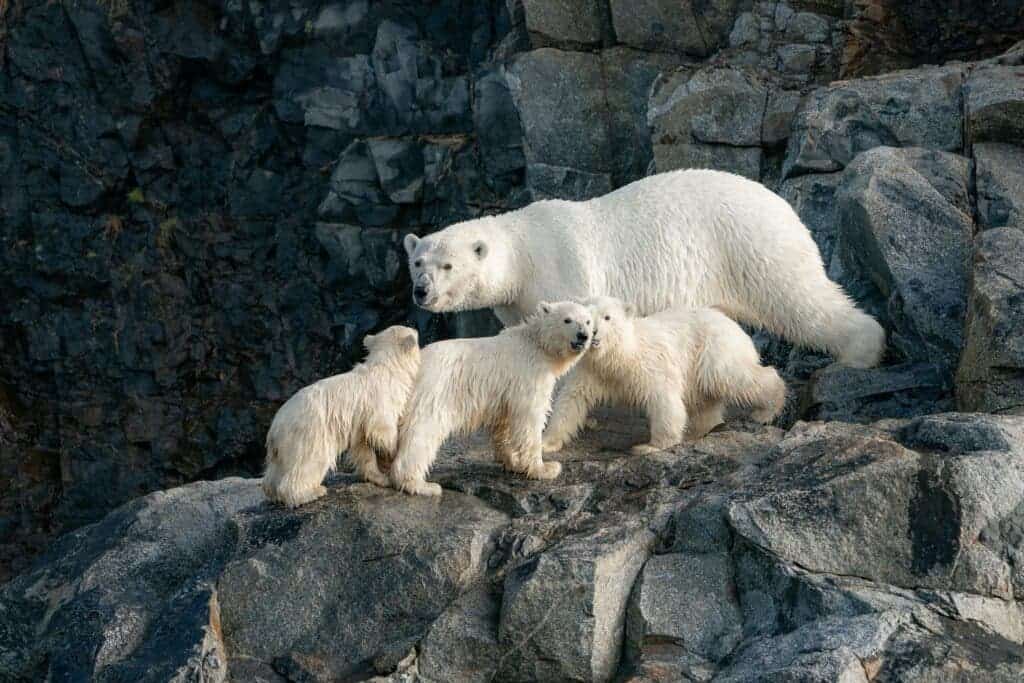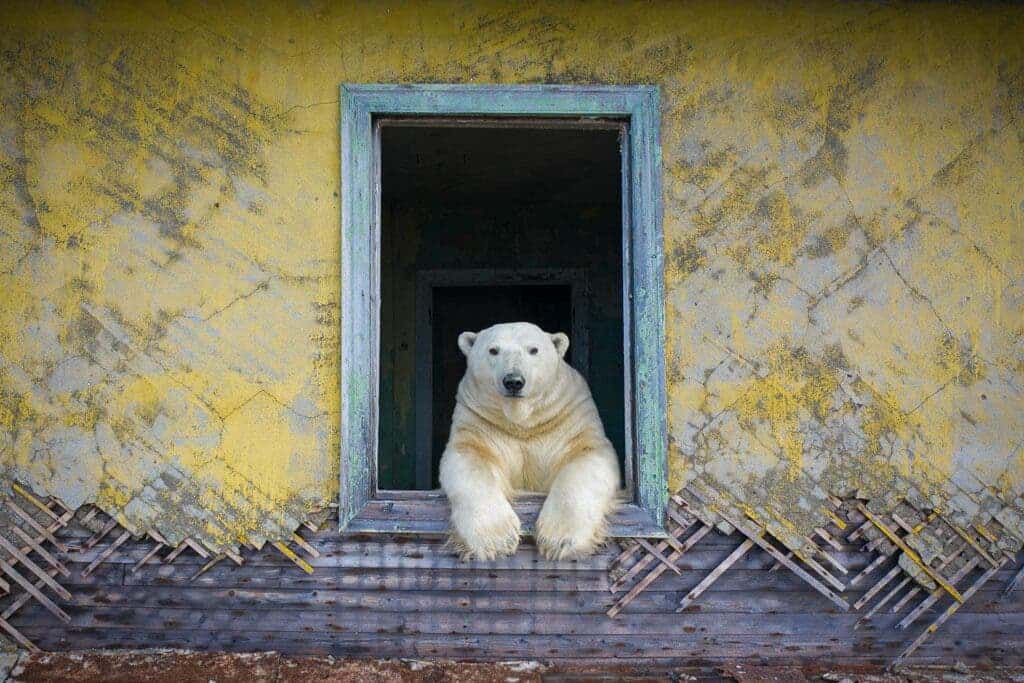
For a long time, Dmitry Kokh had dreamed about photographing polar bears. That’s a lofty goal for a wildlife photographer but the way he sees it, if you devote so much time to an activity, your goals should be ambitious.
There aren’t that many places where you can hope to see polar bears — but Wrangel Island is one of them. Located in the remote parts of north-eastern Russia (west of Alaska), the island is a UNESCO nature reserve. The place is isolated and inaccessible, which is a good thing for the animals (as less human interference is generally appreciated).

The preparations for the expedition took nearly two years, Kokh set out with a party. It was a rewarding trip, but not an easy one.
“We met an incredible number of different birds, several brown bears, sea lions and seals,” the photographer wrote for The Guardian. “We went scuba diving in the waters of the Chukchi Sea, which turned out to be full of life. I felt as if I was in a parallel universe. Days and weeks passed. Landscapes changed dozens of times: sunny pebble beaches, steep cliffs, mountains and tundra. Finally, after passing Cape Dezhnev and heading for Wrangel Island, we began to encounter floating sea ice, which was unusual for the time of year. It had been assumed that the ice edge would be much farther north.”
Then, one day when the weather was particularly bad, they decided to approach Kolyuchin Island, a small island just 11 km (6.8 mi) from the northern shore of the Chukotka Peninsula.
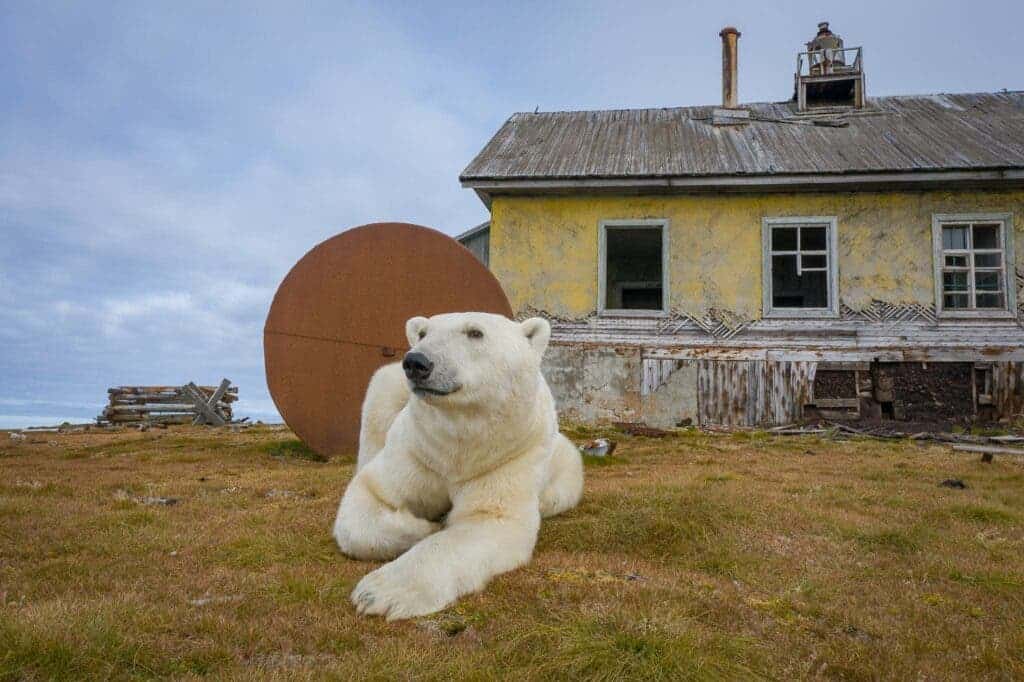
Kolyuchin Island isn't known for much. It's so remote, rocky, and small that it's rarely of any interest. However, the Soviets did build a weather station there. It was a rough station to work in, without any freshwater and with an average annual temperature of -9.5 °C (14.9 °F).
The station and a small surrounding village were abandoned in 1992, but they still stand today -- an abandoned village in the frigid parts of Chukotka. Kokh and friends also weren't expecting much as they were sailing by the island.
Then, they saw something move around the windows.
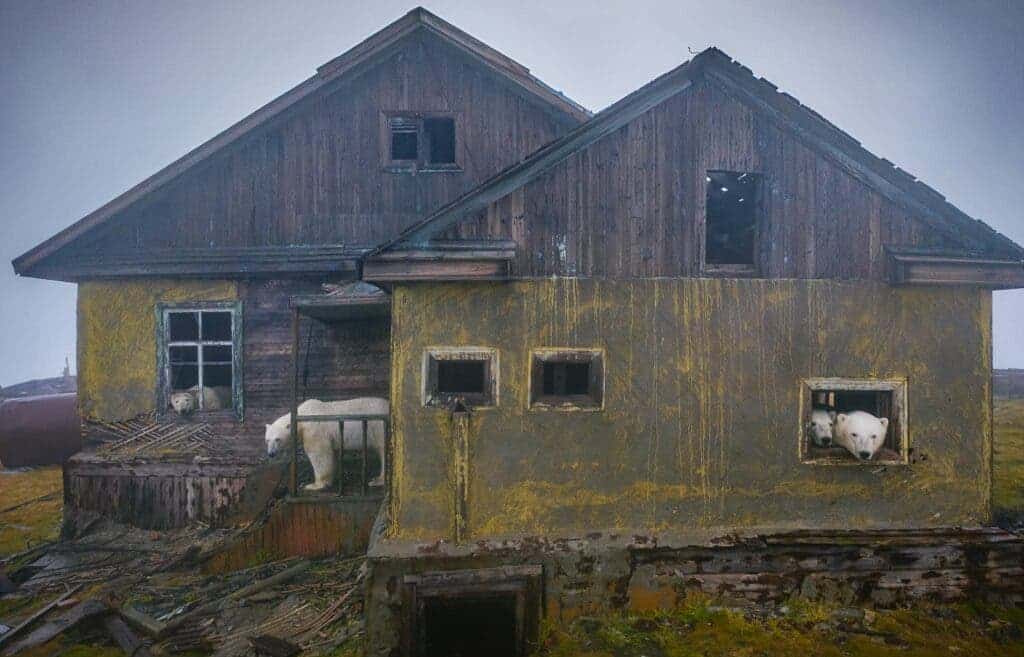
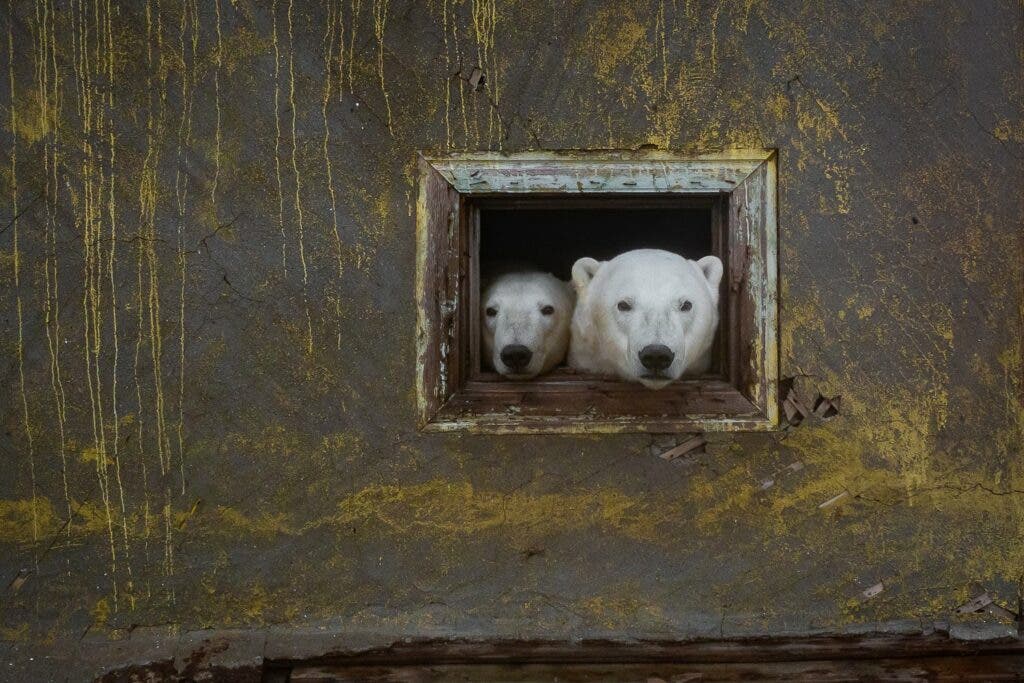
As it turns out, there were about 20 polar bears on the island that day, mostly males, but also females with cubs. The photographer couldn't land on the island, so instead, he took photos from a drone equipped with low-noise propellers.
After some time, the bears didn't seem to mind the drone at all, so they just ignored it for the most part, allowing Kokh to take these stunning photos.
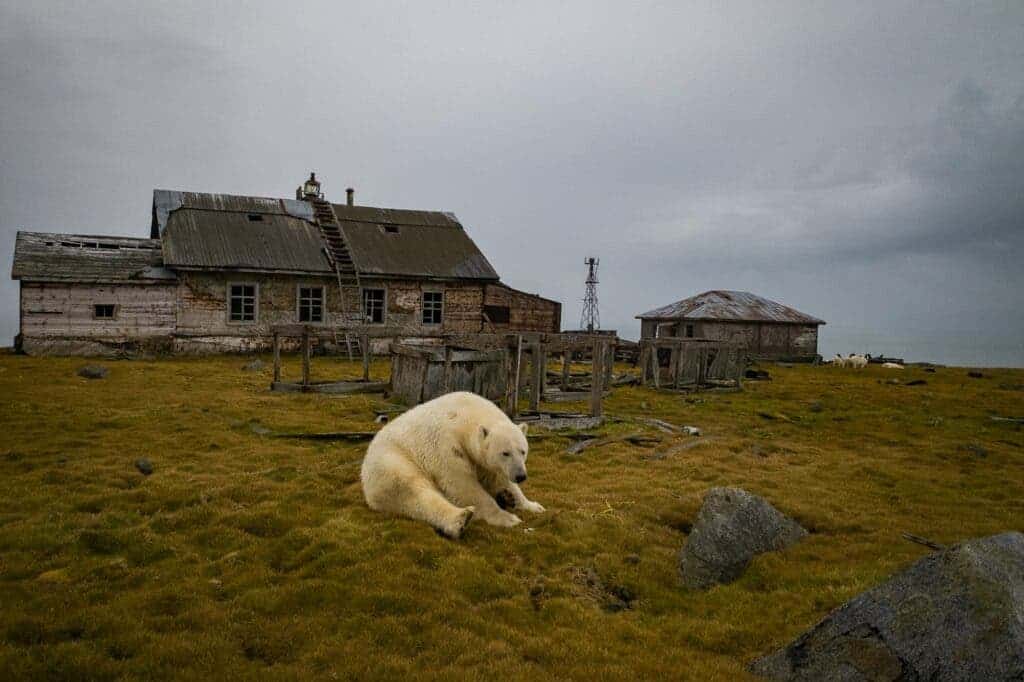
The photographer asked one of Russia’s top polar bear experts, Anatoly Kochnev, why the bears went into the buildings. Kochnev said the bears are curious by nature so they like exploring, but they've also been historically hunted by humans, so they use the houses for protection.
It's not uncommon for polar bears to be on the small island, but as it turns out, it's very rare for so many of them to gather. According to Kochnev, this happens because every nine years, the floating ice remains near the shore in summer, prompting the bears to stay there for longer -- which Kokh confirmed when he saw almost no bears on Wrangel Island.

Polar bears are considered to be marine mammals because they spend so much time on the shores and in the water. They are excellent swimmers and regularly travel for over 30 miles (48 kilometers). In one case, a bear was spotted swimming as far as 220 miles (354 kilometers).
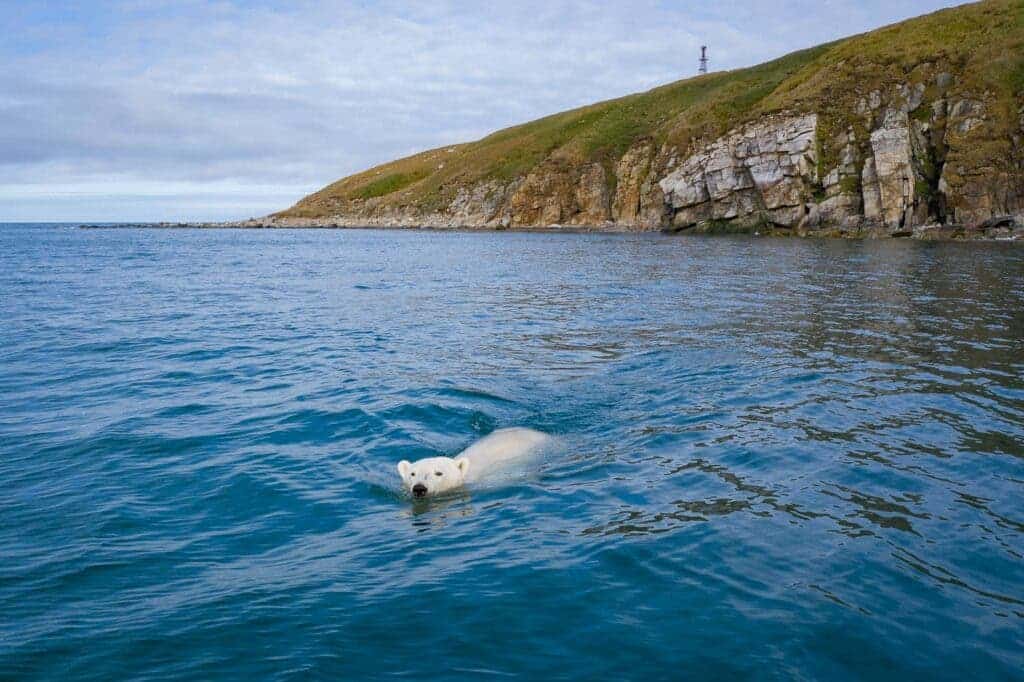
Polar bears are under grave threat due to the effects of man-made climate change. As temperatures continue to rise, ice continues to melt -- and polar bears depend on this ice. Less ice means they have to swim more to find food, consume more energy, and although they are good swimmers, it's still putting great pressure on all populations of polar bears.
The International Union for the Conservation of Nature (IUCN) publishes a “Red List” of creatures faced with extinction, and polar bears are listed as “vulnerable”, which means they face a high risk of extinction in the wild.
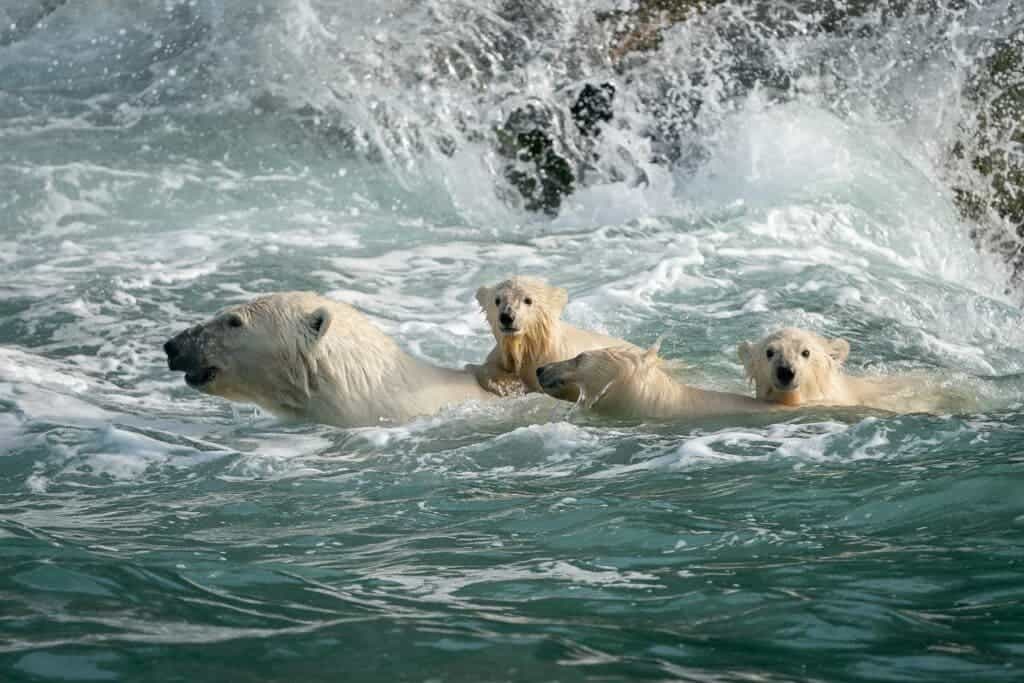
Kokh also emphasizes how crucial it is for humans to take care of life on the planet:
"Though several months have passed since the expedition, I still sometimes see polar bears in decaying windows before my eyes when falling asleep. And looking at the main photo in my life at the moment, the one named House of Bears, I think that sooner or later all human-made things on Earth will cease to exist – buildings, cars and computers will all meet their end. But life is eternal. These bears will continue to hunt, swim among ice floes and explore islands even when civilization ceases to exist. But life will remain eternal only if we humans finally begin to take care of the planet and the living creatures that need our protection."
